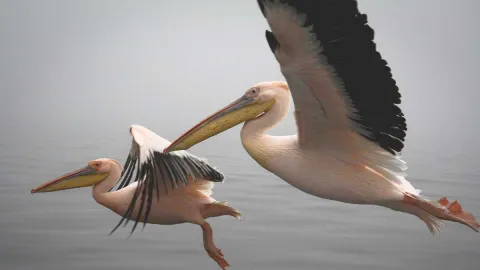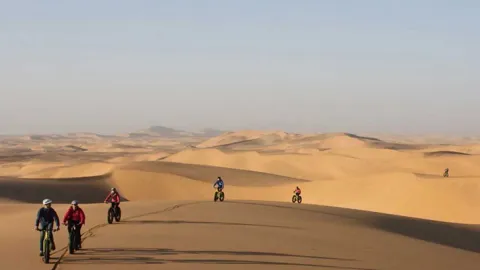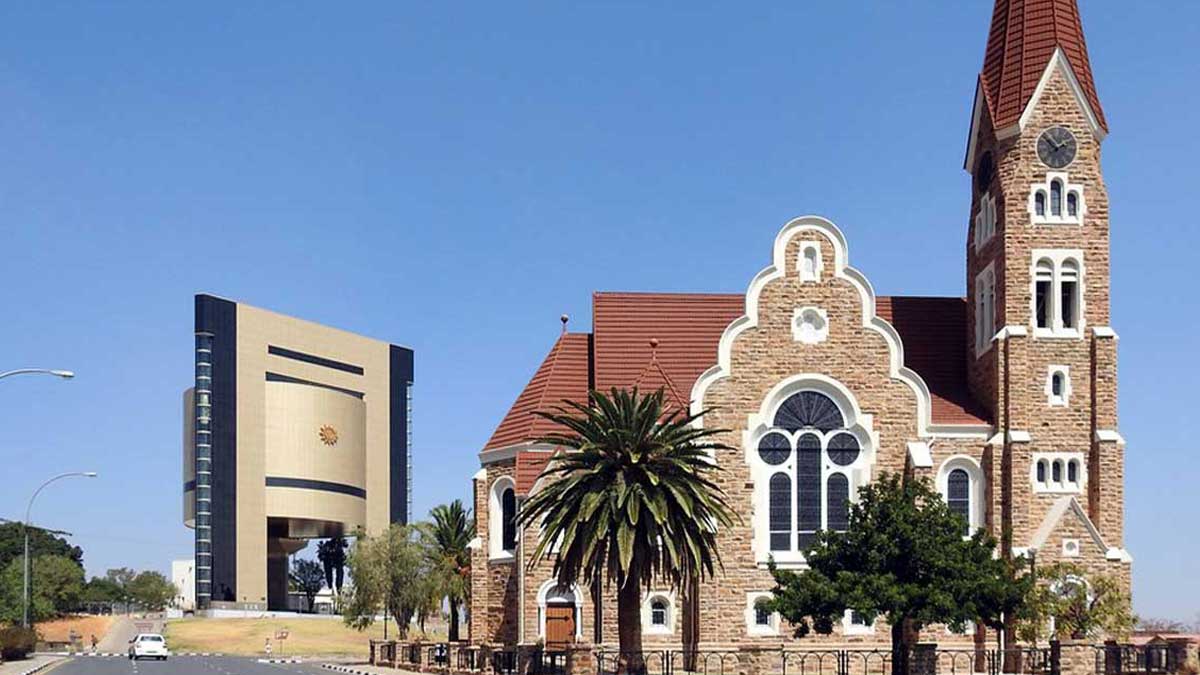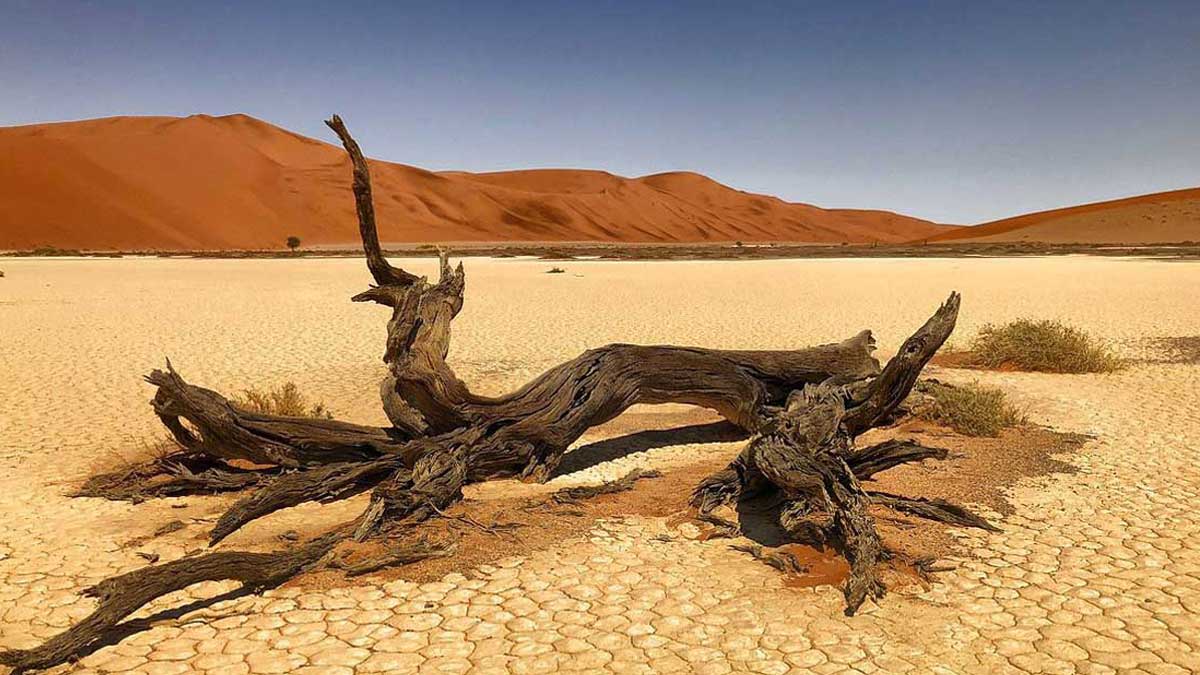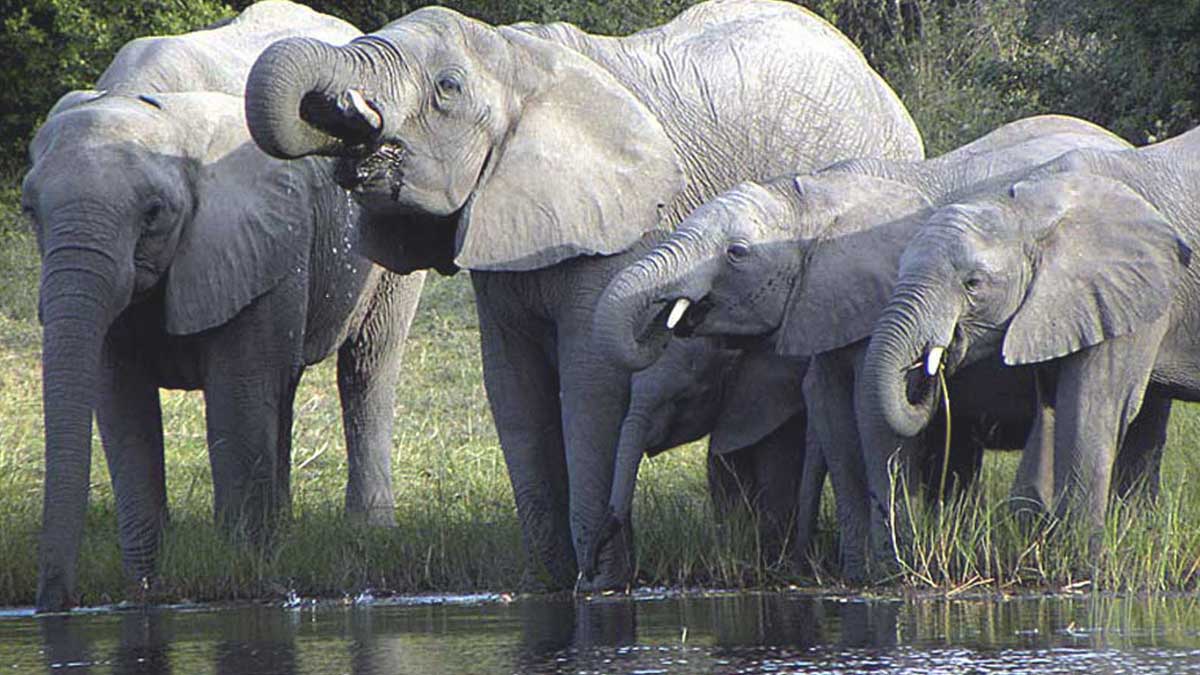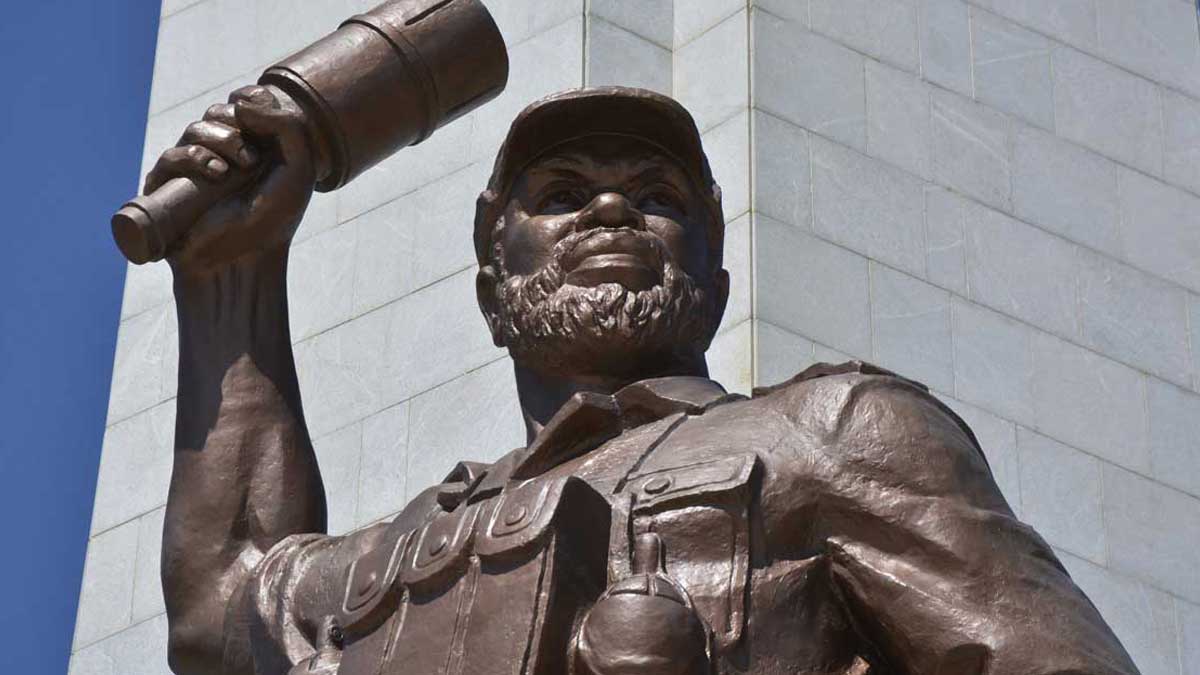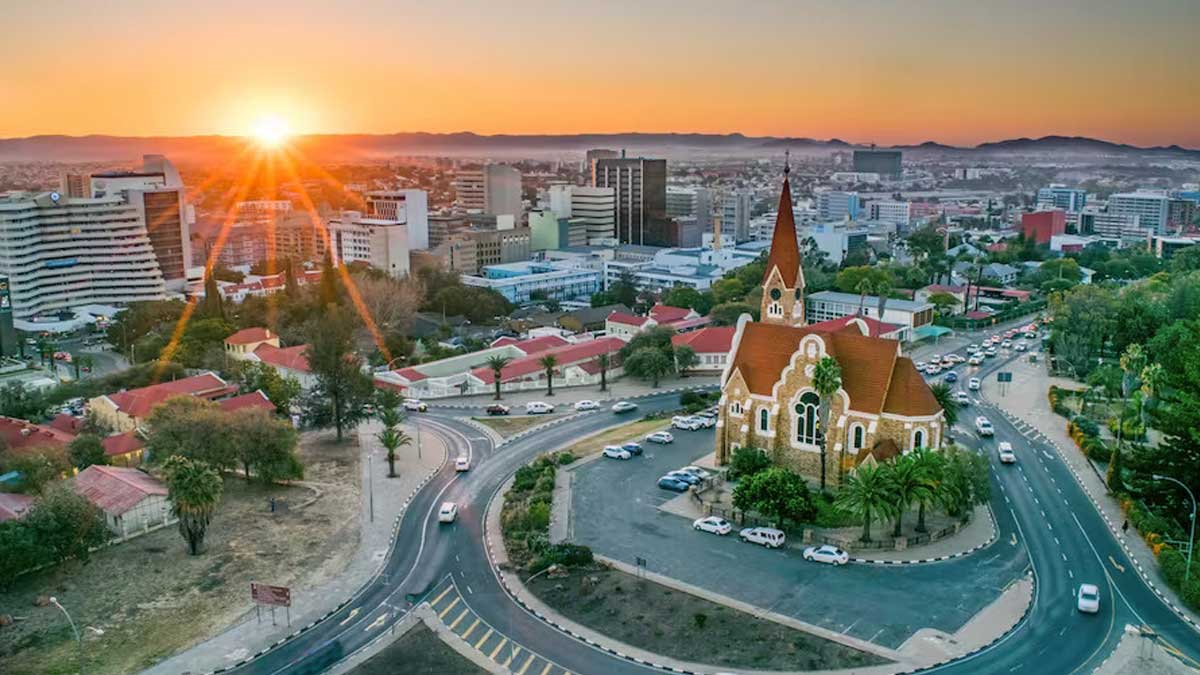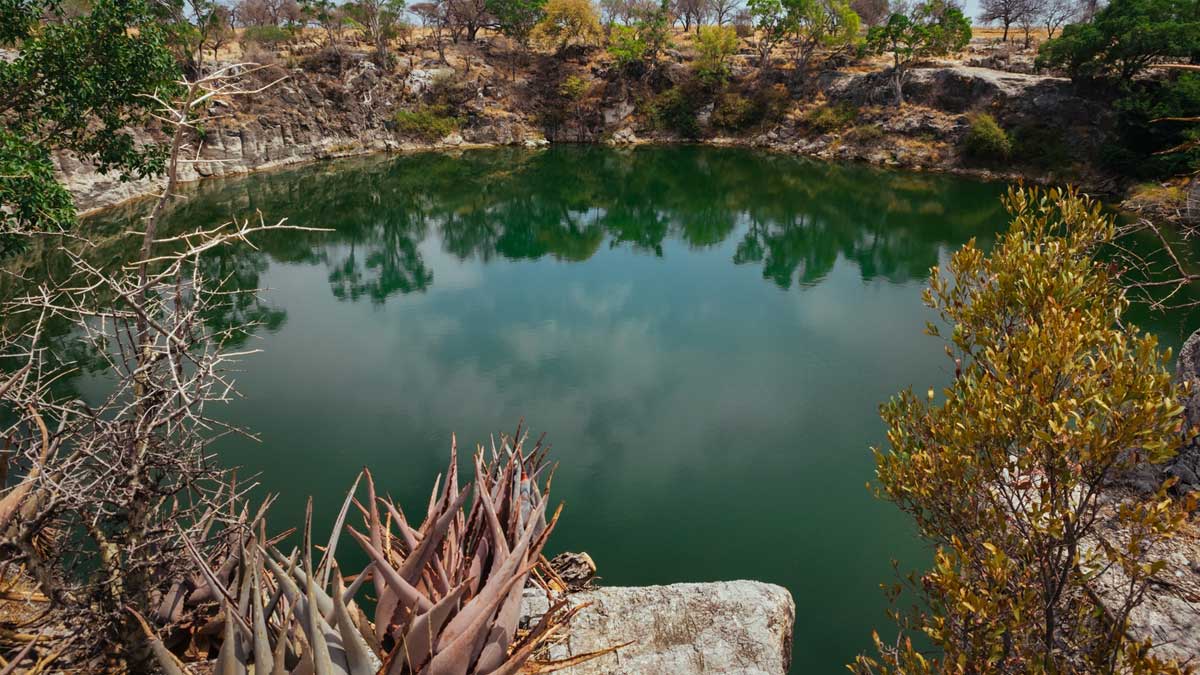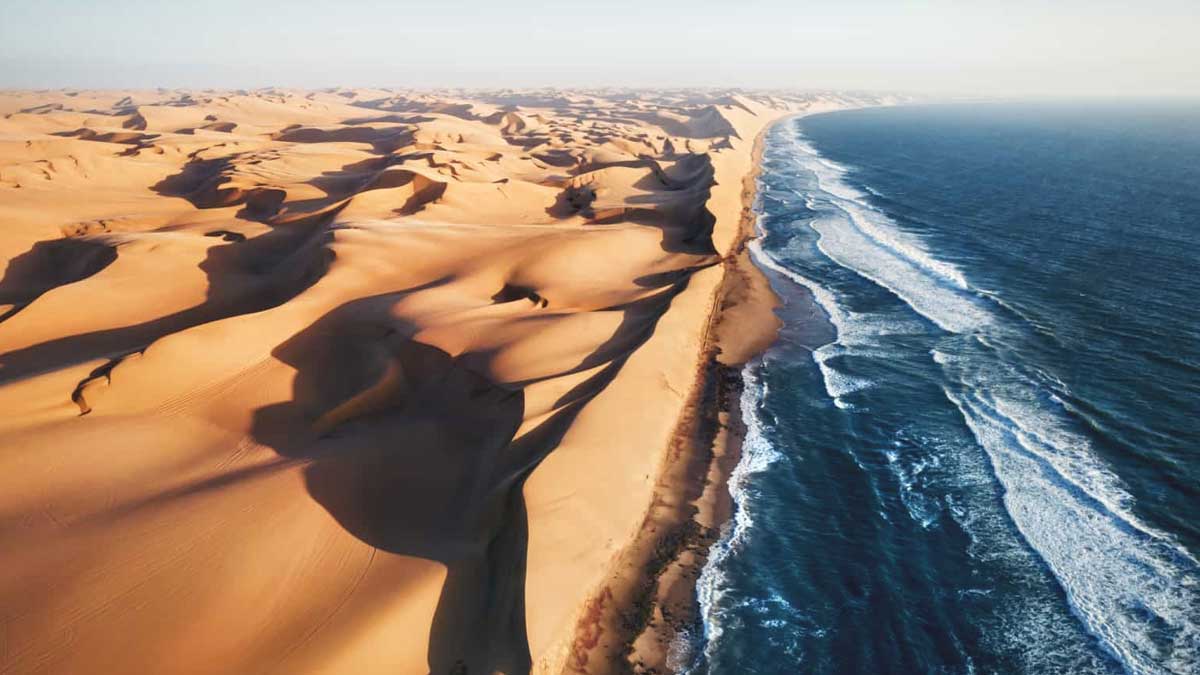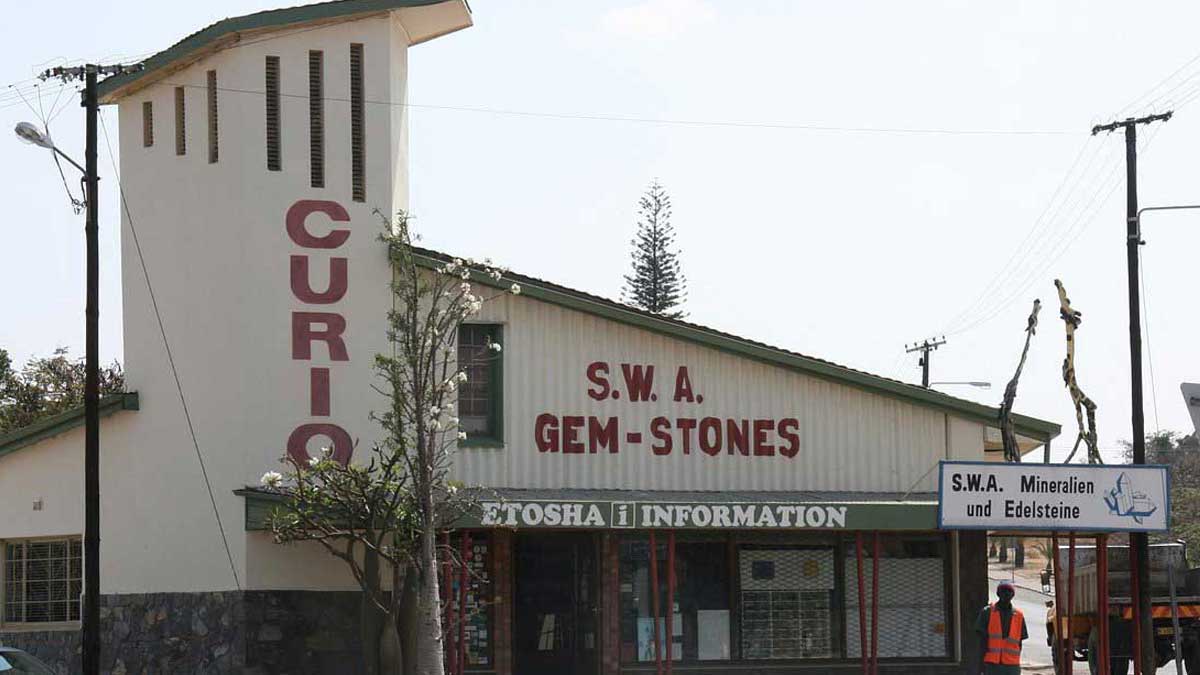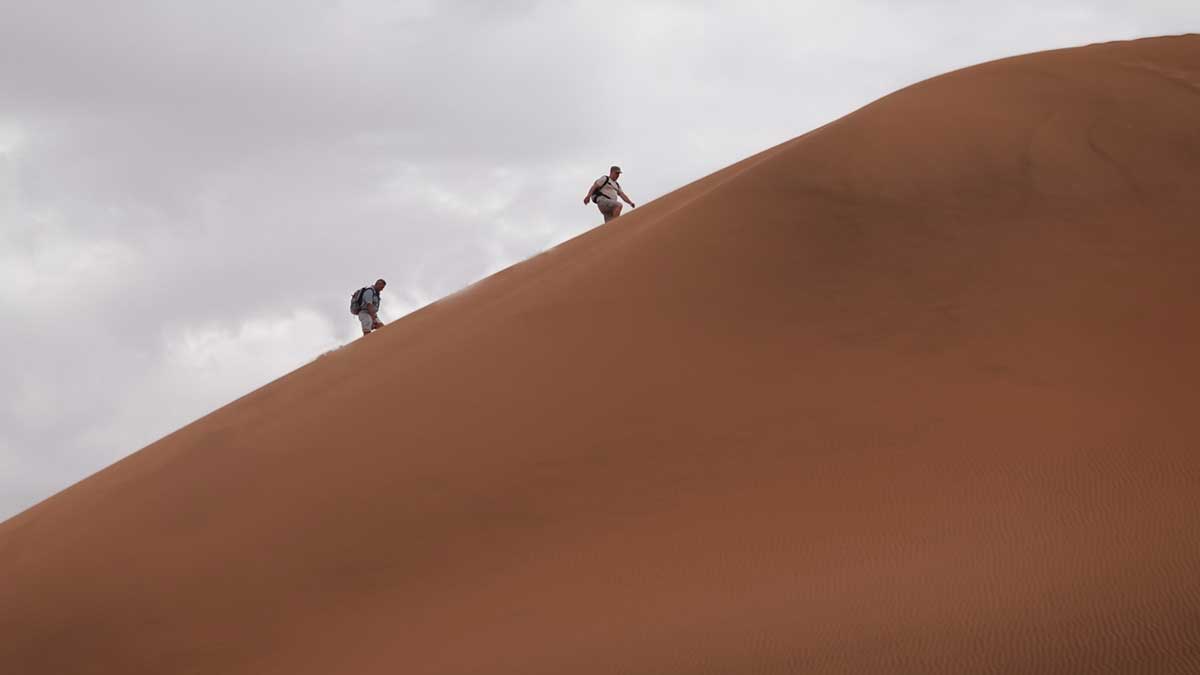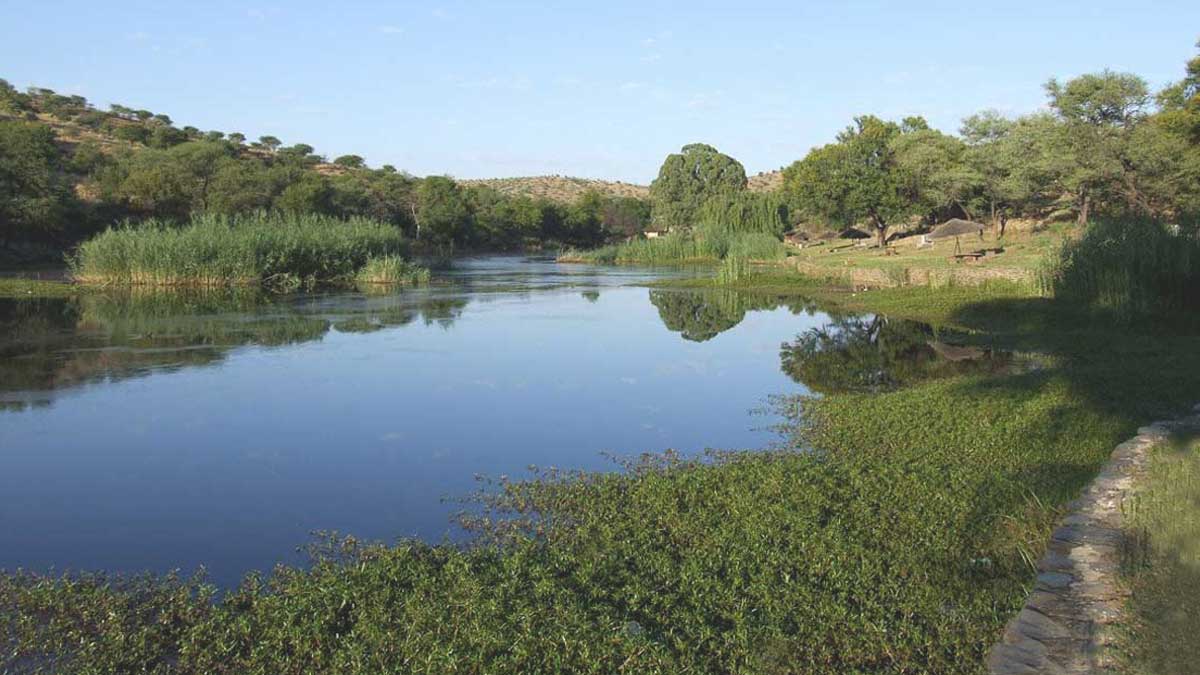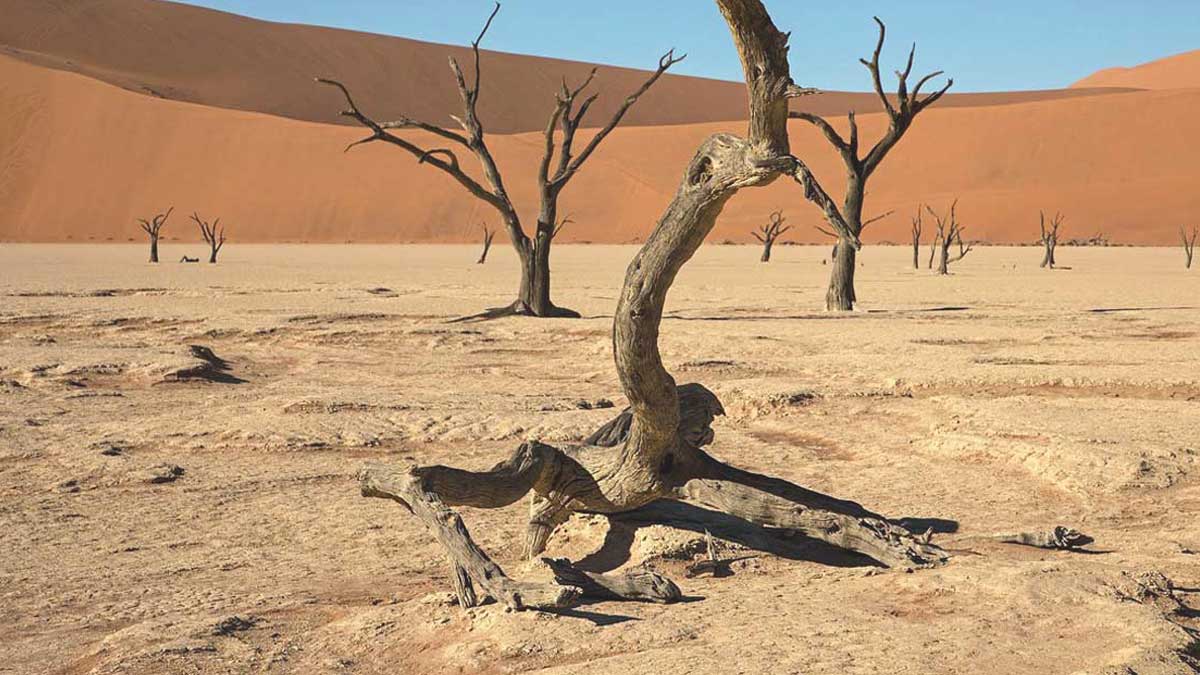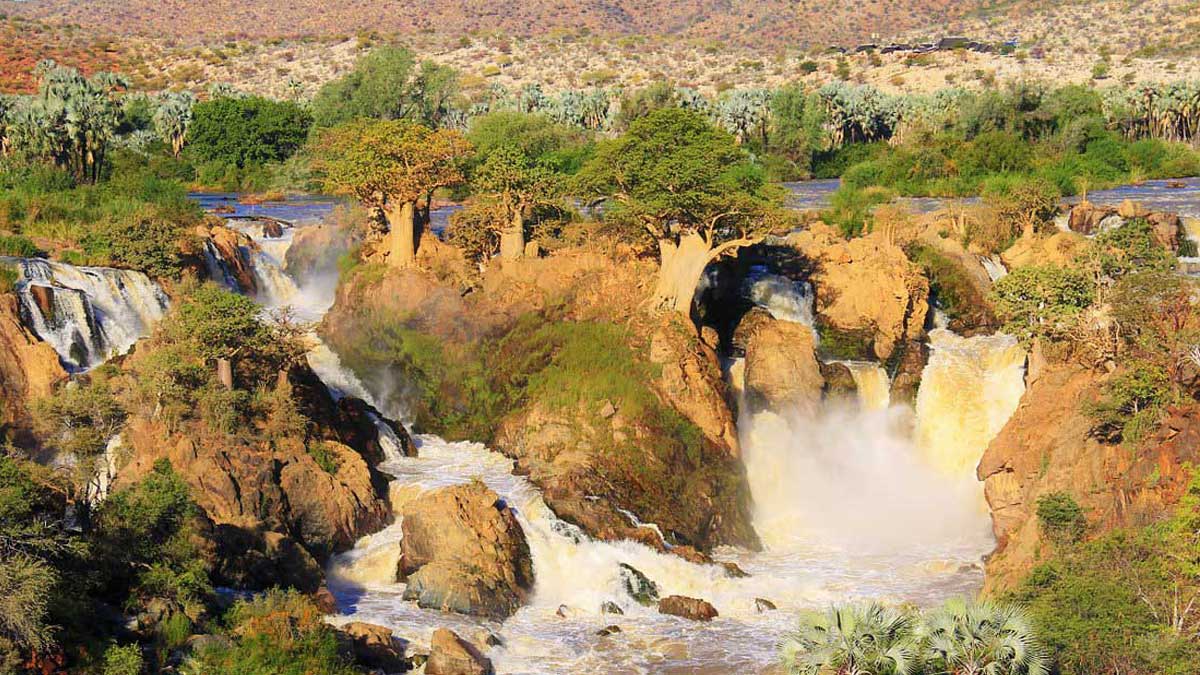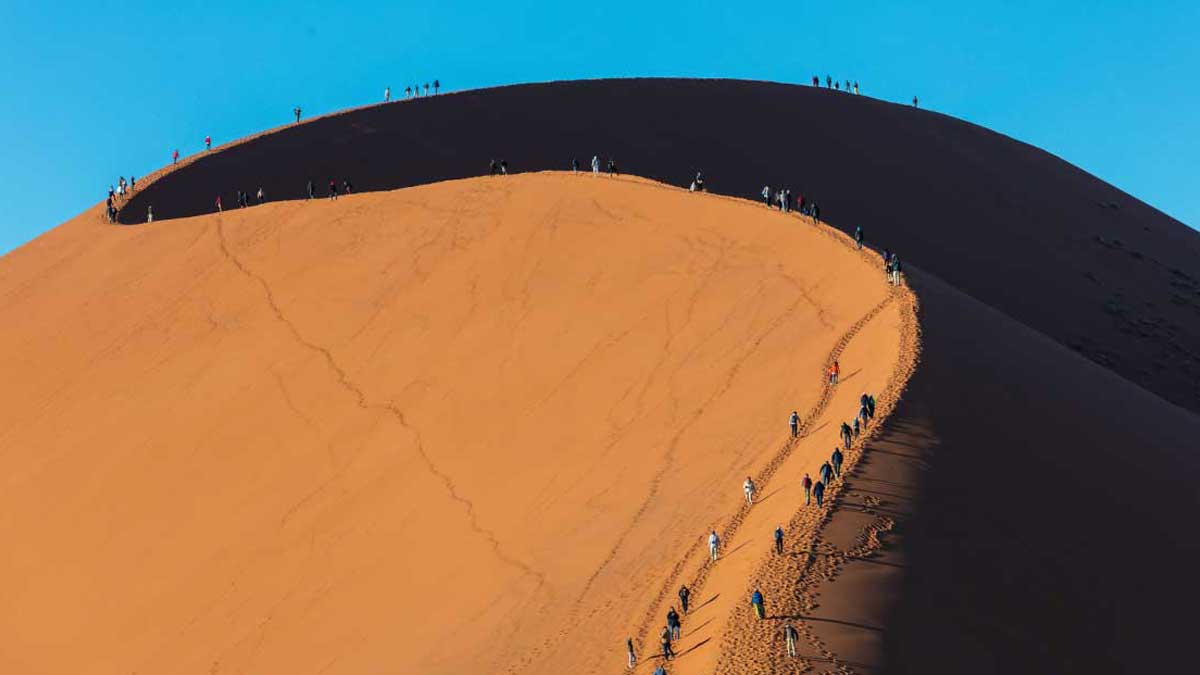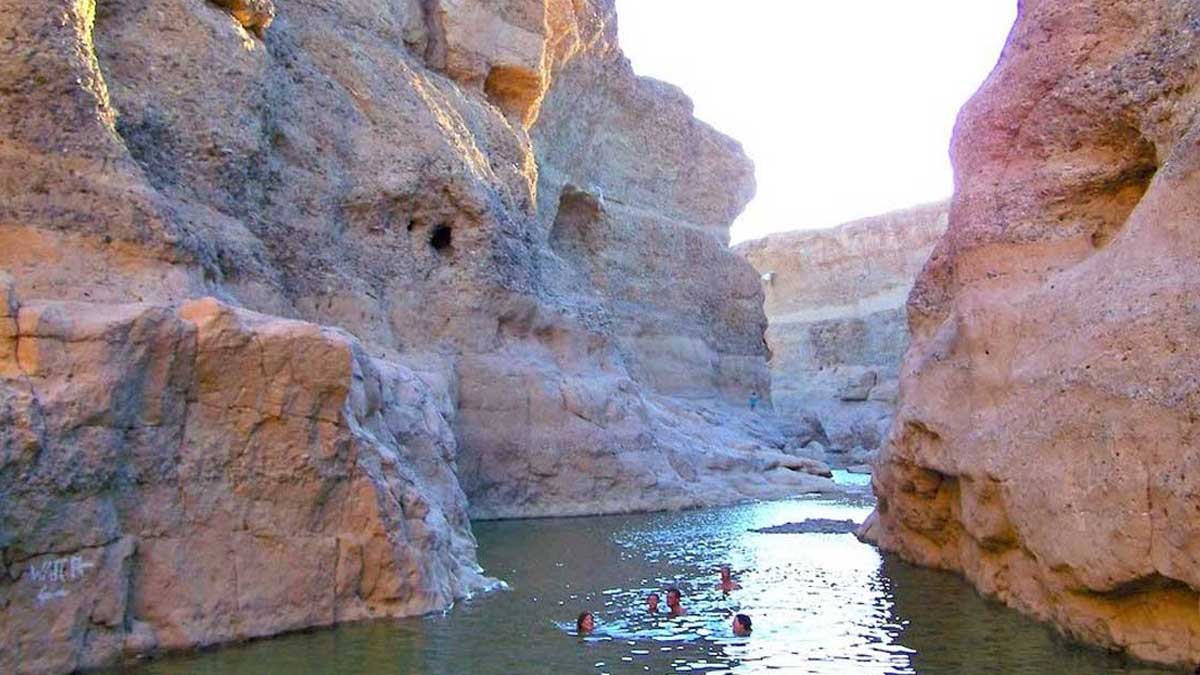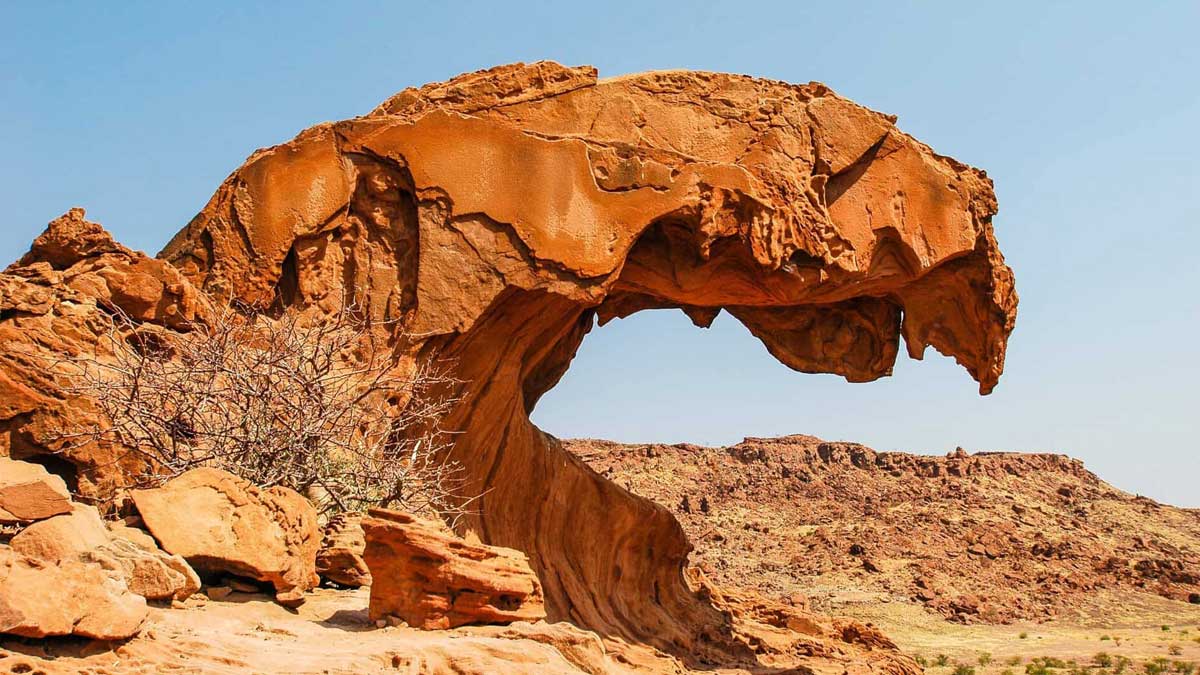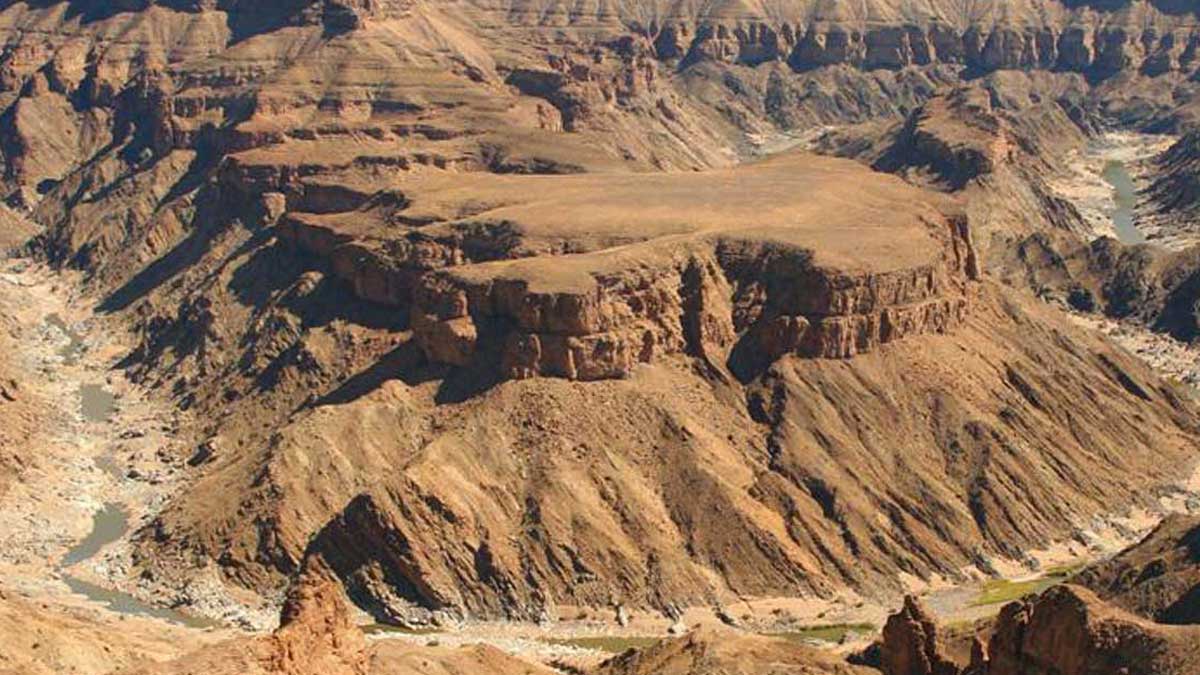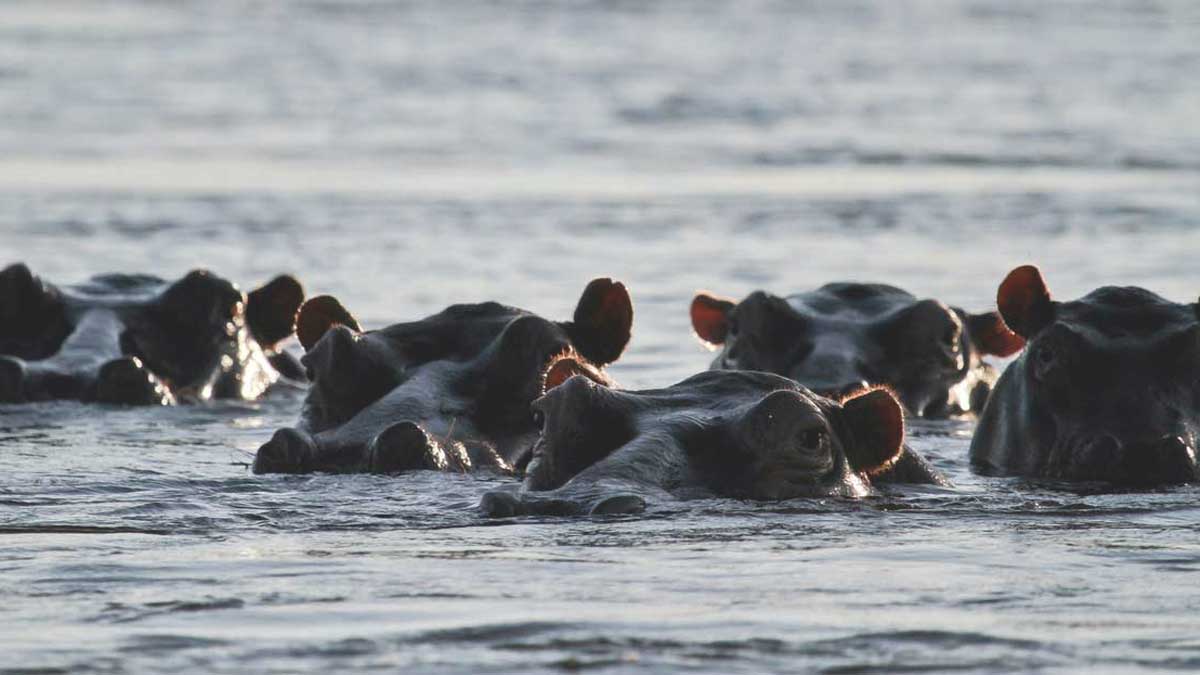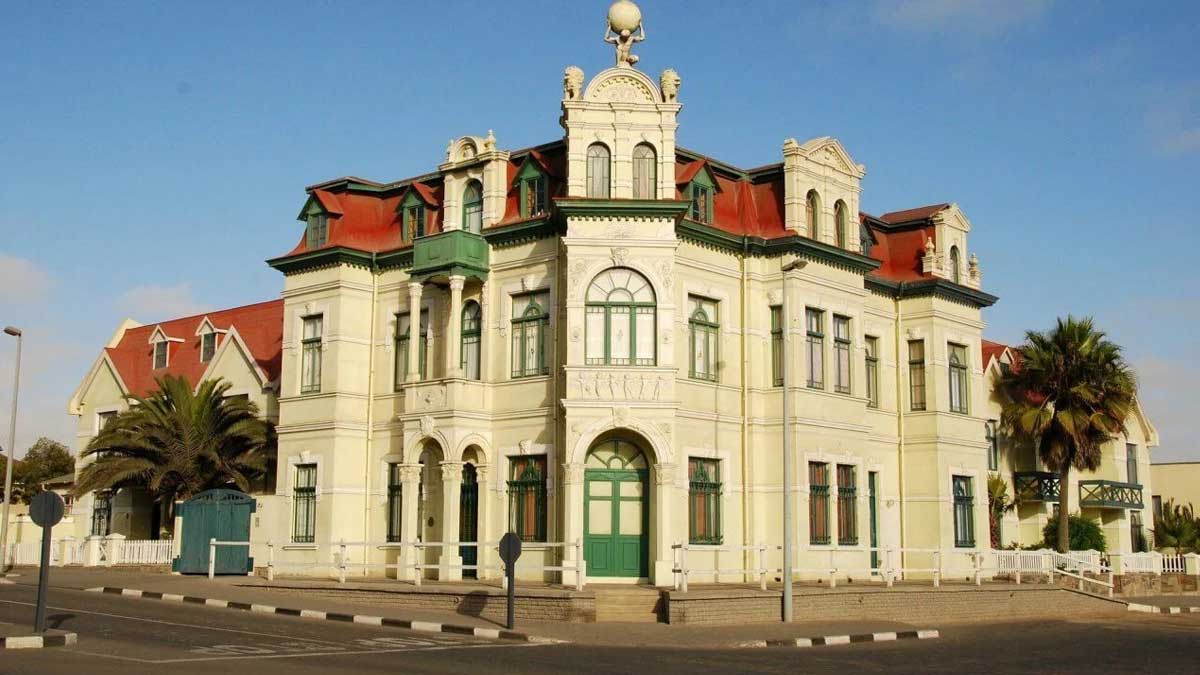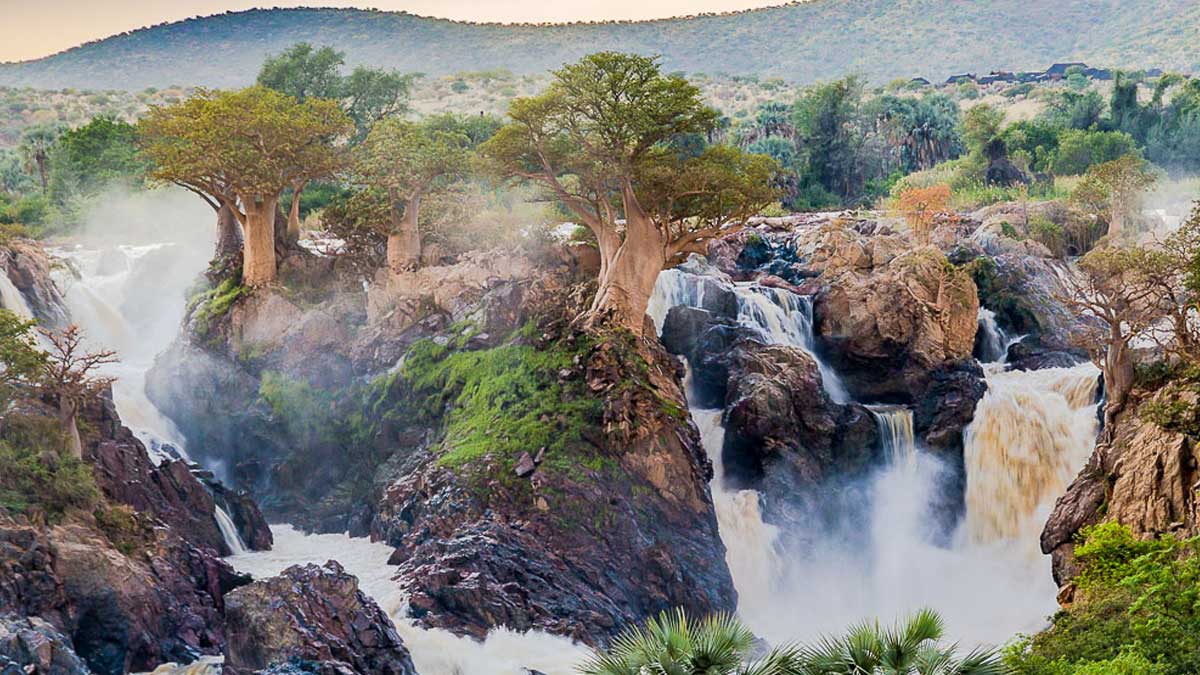Swakopmund
Adventure Capital Of Namibia- Listing ID:
- AT504
- Hours:
- open-air area
- Region:
- Erongo Region
- Founded:
- 1892
- Average vote:
-
- Difficulty level:
- Light
- Activities:
- view activities
Frequently Ask Questions(12)
These FAQs provide essential information to help you plan your visit to Swakopmund
1. What is Swakopmund known for?
Swakopmund is known for its stunning coastal scenery, adventure activities (like sandboarding and quad biking), German colonial architecture, and proximity to the Namib Desert.
2. What is the best time to visit Swakopmund?
The best time to visit is during the cooler dry season from May to October, when temperatures are mild and ideal for outdoor activities.
3. How do I get to Swakopmund?
Swakopmund is accessible by road from Windhoek (about 360 km on the B2 highway) and Walvis Bay (approximately 30 km on the C34). Domestic flights to Walvis Bay Airport are also available.
4. Is Swakopmund safe for tourists?
Yes, Swakopmund is generally safe for tourists. However, standard precautions, such as not leaving valuables unattended and being cautious at night, are recommended.
5. What activities are available in Swakopmund?
Popular activities include sandboarding, quad biking, boat cruises, visiting the Swakopmund Museum, and exploring the nearby Namib Desert.
6. Are there any restaurants or cafés in Swakopmund?
Yes, Swakopmund boasts a variety of dining options, ranging from seafood and local cuisine to international fare. Notable places include The Tug Restaurant and Jetty 1905.
7. Can I find accommodation in Swakopmund?
Yes, there are numerous accommodation options, from luxury hotels and guesthouses to budget-friendly hostels, catering to a wide range of preferences and budgets.
8. What is the climate like in Swakopmund?
Swakopmund has a cool coastal desert climate, characterized by mild temperatures, low humidity, and a cool ocean breeze. Nights can be chilly, even in summer.
9. Are there any shops or markets in Swakopmund?
Yes, there are several shops, boutiques, and markets in Swakopmund where you can purchase local crafts, souvenirs, and food items.
10. Is it possible to do day trips from Swakopmund?
Absolutely! Day trips to the Namib Desert, Sandwich Harbour, and the Skeleton Coast are popular options for visitors.
11. Do I need a rental car to get around Swakopmund?
While Swakopmund is walkable, having a rental car is beneficial for exploring surrounding areas and attractions, especially if you plan to venture into the desert or to nearby towns.
12. What are the local customs I should be aware of?
Namibia is culturally diverse, so it's respectful to greet locals with a friendly "hello." Tipping is appreciated in restaurants, typically around 10-15%.
- Walvis Bay: Located just a short distance from Swakopmund, Walvis Bay is known for its stunning lagoon, rich birdlife, and opportunities for dolphin and seal cruises. Visitors can also enjoy activities like kayaking, sandboarding, and quad biking in the surrounding area.
- Sandwich Harbor: Situated south of Walvis Bay, Sandwich Harbor is a pristine coastal area where towering dunes meet the ocean. Guided tours to Sandwich Harbor offer thrilling off-road experiences, birdwatching opportunities, and the chance to witness the shifting sand dunes and lagoon.
- Cape Cross Seal Reserve: To the north of Swakopmund, the Cape Cross Seal Reserve is home to one of the largest colonies of Cape fur seals in the world. Visitors can witness thousands of seals in their natural habitat and learn about their behavior and conservation efforts.
- Moon Landscape: The Moon Landscape is a unique geological formation near Swakopmund, characterized by barren and eroded hills that resemble the surface of the moon. This surreal and otherworldly landscape offers excellent photo opportunities and a chance to explore the fascinating geological history of the region.
- Skeleton Coast: The Skeleton Coast, stretching north from Swakopmund, is a remote and desolate coastline known for its shipwrecks and rugged beauty. Visitors can take scenic flights over the area, embark on 4x4 tours, or explore the diverse flora and fauna that have adapted to survive in this harsh environment.
- Living Desert Tours: Specialized Living Desert Tours offer the chance to discover the fascinating desert-adapted creatures of the Namib Desert, such as the famous "dancing" white lady spider, sidewinder snakes, and chameleons. Knowledgeable guides share insights into the remarkable adaptations of these creatures and the delicate desert ecosystem.
- Swakopmund Museum: For those interested in the history and culture of the region, the Swakopmund Museum provides exhibits on the indigenous peoples, early explorers, colonial history, and natural history of the area. The museum offers a comprehensive overview of the region's past and its unique environment.
- Golfing: Swakopmund is home to a picturesque 18-hole golf course that offers beautiful views of the ocean and surrounding landscapes. Golf enthusiasts can enjoy a round of golf while experiencing the unique coastal ambiance.
Each activity/attraction offers its own unique experience, from coastal adventures to desert exploration and cultural discoveries.
Swakopmund General Facilities
Internet
- no data
Parking & transport
- no data
![]() 24-hour front desk
24-hour front desk
![]() ATM/banking
ATM/banking
Add new comment
Tours & Activities Nearby Swakopmund
Experiences You Can Engage In
Namibia's tourist season - The tourist season generally coincides with the dry season, which runs from May to October. This period is considered the peak time for tourism due to the favorable weather conditions and excellent wildlife viewing opportunities.
Here is a general guide to Namibia's tourist seasons to know when is the best time to visit:
Best: Dry Season (May to October) This is the peak tourist season and considered the best time to visit Namibia.
Good: Shoulder Season (April and November) These months transition between the wet and dry seasons. April offers a greener landscape, while November sees the arrival of migratory birds.
Fair: Wet Season (December to March) This period is considered the least favorable for tourism due to higher temperatures and occasional heavy rainfall. Wildlife disperses, making game viewing more challenging. However, if you prefer a quieter experience and enjoy birdwatching or lush landscapes, it might still be worth considering.
Poor: Travel is not recommended, the weather at this time can make sightseeing/resting very difficult or even impossible.
BEST TIME TO VISIT - MONTH BY MONTH
BEST TIME TO VISIT
FAIR VISITING NAMIBIA IN JANUARY
January falls within the wet season in Namibia, with sporadic rainfall. While temperatures can be high, the landscapes are lush, and it's a good time for birdwatching. The central and northern regions might still be experiencing some rainfall.
KEY HIGHLIGHTS
- Summer Vibes: Embrace the vibrant atmosphere of Namibia's summer season, marked by clear skies and longer daylight hours.
- Wildlife Viewing: Visit Etosha National Park and witness animals congregating around waterholes, providing exceptional wildlife viewing opportunities as they seek relief from the heat.
- Desert Adventures: January is an excellent time for exploring the iconic Namib Desert and its renowned sand dunes, including the famous Dune 45 and Deadvlei.
- Birdwatching Delight: Migratory birds flock to the wetlands and parks, adding a colorful dimension to the landscapes and offering a paradise for bird enthusiasts.
- Less Crowds: While January can be popular, especially around New Year's, it generally sees fewer tourists compared to other peak months, allowing for a more serene travel experience.
- Favorable Accommodation: Availability and rates may be more favorable than during the peak months, giving you a chance to secure accommodations that suit your preferences.
FAIR VISITING NAMIBIA IN FEBRUARY
Similar to January, February is part of the wet season. It can be hot and humid, with intermittent rainfall. Wildlife is active, and birdwatching remains a highlight. Some areas might still have green vegetation.
KEY HIGHLIGHTS
- Warm and Pleasant Weather: Experience comfortable temperatures and sunny days as Namibia transitions from summer to autumn, making outdoor activities enjoyable.
- Wildlife Viewing: Continue to witness abundant wildlife activity, especially in parks like Etosha, where animals gather around waterholes, providing excellent opportunities for observation and photography.
- Migratory Birds: February is a prime time for birdwatching as migratory bird species continue to grace Namibia's wetlands and national parks with their vibrant presence.
- Coastal Charms: Explore the scenic coastal towns of Swakopmund and Walvis Bay, enjoying moderate temperatures, adventure sports, and fresh seafood.
- Desert Adventures: Venture into the Namib Desert and capture stunning vistas of sand dunes against clear blue skies, especially in iconic locations like Sossusvlei.
- Off-Peak Crowds: While February can still see visitors, it generally experiences fewer tourists compared to peak months, allowing for a more tranquil and personalized travel experience.
- Comfortable Accommodations: Secure accommodations with relative ease and possibly enjoy more favorable rates than during the busier tourist seasons.
FAIR VISITING NAMIBIA IN MARCH
March marks the transition from the wet season to the dry season in Namibia. Temperatures start to cool down, and rainfall decreases. It's a good time for wildlife viewing, and the landscapes begin to dry out.
KEY HIGHLIGHTS
- Mild and Pleasant Weather: Enjoy comfortable temperatures as Namibia transitions from late summer to early autumn, providing a pleasant climate for outdoor activities.
- Lush Landscapes: Experience the aftermath of the rainy season, with green vegetation and blooming wildflowers adding a vibrant touch to the scenery.
- Wildlife Activity: Witness a combination of abundant wildlife and lush vegetation, making March an excellent month for observing animals in their natural habitats.
- Birdwatching Extravaganza: Continue to enjoy exceptional birdwatching opportunities as both resident and migratory bird species thrive in Namibia's diverse ecosystems.
- Desert Exploration: Venture into the captivating Namib Desert, exploring iconic spots like Sossusvlei and Deadvlei with pleasant temperatures for hiking and photography.
- Fewer Crowds: March typically sees fewer tourists compared to peak months, providing you with a more serene and intimate encounter with Namibia's natural wonders.
- Comfortable Accommodations: Secure accommodations without the rush of peak tourism, and potentially benefit from more favorable rates.
GOOD VISITING NAMIBIA IN APRIL
April is a pleasant month to visit Namibia as temperatures continue to cool, and rainfall becomes scarce. The scenery is still relatively green, and wildlife sightings are good. It's a great time for photography.
KEY HIGHLIGHTS
- Mild and Pleasant Climate: Enjoy comfortable temperatures and clear skies as Namibia enters its autumn season, making it an ideal time for outdoor exploration.
- Lush Greenery: Experience the tail end of the rainy season, with landscapes still adorned in green vegetation and blooming wildflowers, creating a picturesque setting.
- Optimal Wildlife Viewing: April offers a great balance of abundant wildlife and clearer visibility due to the thinner vegetation, making it an excellent time for game drives and safaris.
- Birdwatching Extravaganza: Bird enthusiasts can continue to revel in the diverse bird species found throughout Namibia's national parks and wetlands.
- Desert Adventures: Explore the iconic sand dunes of Namib-Naukluft National Park, such as Sossusvlei and Deadvlei, with comfortable temperatures for hiking and photography.
- Fewer Tourists: Enjoy a more tranquil travel experience as April typically sees fewer tourists compared to the peak months, allowing you to appreciate Namibia's beauty at a leisurely pace.
- Comfortable Accommodations: Secure accommodations with relative ease and potentially take advantage of favorable rates before the high tourist season.
BEST VISITING NAMIBIA IN MAY
May is the start of the dry season and is considered one of the best times to visit Namibia. The weather is mild, and the landscapes are drying out. Wildlife concentrations around water sources increase, making it an excellent time for game viewing.
KEY HIGHLIGHTS
- Moderate Weather: Experience pleasant temperatures as Namibia transitions from autumn to its dry winter season, creating comfortable conditions for outdoor activities.
- Optimal Wildlife Viewing: May is an excellent month for wildlife enthusiasts, as animals continue to gather around waterholes, offering exceptional opportunities for game viewing.
- Clear Skies: Enjoy clear and sunny days with minimal rainfall, providing excellent visibility for wildlife spotting, photography, and outdoor adventures.
- Desert Exploration: Explore the iconic sand dunes of Namib-Naukluft National Park, such as Sossusvlei and Deadvlei, with comfortable temperatures and striking contrasts.
- Astro-Tourism: Take advantage of the clear and unpolluted night skies for exceptional stargazing opportunities in Namibia's remote areas.
- Less Crowded: May generally sees fewer tourists compared to peak months, allowing for a more serene and personalized travel experience.
- Ideal for Self-Drive Safaris: With moderate temperatures and dry conditions, May is a great time for self-drive safaris and exploring Namibia's diverse landscapes.
- Comfortable Accommodations: Secure accommodations without the rush of high tourist season, and possibly benefit from more favorable rates.
BEST VISITING NAMIBIA IN JUNE
June is the beginning of the peak season in Namibia. The weather is generally dry and cool, making it comfortable for outdoor activities. Wildlife viewing, especially in parks like Etosha, is excellent. Accommodations and popular sites might be busier, so booking in advance is advisable.
KEY HIGHLIGHTS
- Dry Season Begins: June marks the start of the dry season in Namibia, characterized by clear skies and minimal rainfall, creating ideal conditions for outdoor exploration.
- Optimal Wildlife Viewing: With the onset of the dry season, animals congregate around water sources, providing excellent opportunities for game viewing in parks like Etosha.
- Clear Visibility: Enjoy clear and sunny days with excellent visibility, making it ideal for wildlife spotting, photography, and outdoor exploration.
- Adventure Opportunities: Engage in exciting activities like dune hiking, quad biking, and hot air ballooning, taking advantage of the comfortable weather.
- Diverse Landscapes: Discover the contrasting landscapes of Namibia, from desert dunes to rugged canyons and unique rock formations.
- Stargazing Delight: Experience breathtaking stargazing sessions under the clear Namibian skies, especially in remote areas with minimal light pollution.
- Favorable Temperatures: Enjoy moderate daytime temperatures and cooler evenings, creating a comfortable environment for exploration and outdoor activities.
BEST VISITING NAMIBIA IN JULY
July is in the heart of the dry season, with cool temperatures and minimal rainfall. It's a popular month for tourists due to the excellent game viewing opportunities. Wildlife congregates around waterholes, and the landscapes are dry and picturesque.
KEY HIGHLIGHTS
- Dry and Cool Weather: July is characterized by dry and cool weather, providing pleasant conditions for outdoor activities and exploration.
- Optimal Wildlife Viewing: The dry season continues, and wildlife viewing is at its prime as animals congregate around waterholes, making it an excellent time for game drives and safaris.
- Clear Skies: Enjoy clear skies and crisp air, providing excellent visibility for wildlife spotting, photography, and stargazing.
- Cultural Encounters: Engage with local communities and learn about Namibia's traditions and way of life through interactions, events, and cultural experiences.
- Adventure Activities: Indulge in thrilling desert adventures, such as sandboarding, quad biking, and guided hikes, taking advantage of the comfortable weather.
- Stargazing Paradise: Experience awe-inspiring stargazing sessions in Namibia's remote areas, where the clear night skies reveal a breathtaking display of stars.
- Less Crowded: While July can be popular, especially around school holidays, it generally sees fewer tourists compared to peak months, offering a more serene travel experience.
- Comfortable Accommodations: Secure accommodations without the rush of high tourist season, and possibly benefit from more favorable rates.
BEST VISITING NAMIBIA IN AUGUST
August is similar to July, with dry and cool weather. It remains an ideal time for wildlife viewing, and the landscapes are often beautifully desolate. Accommodations can be busy, so booking in advance is recommended.
KEY HIGHLIGHTS
- Dry and Mild Weather: August offers dry and mild weather, making it a comfortable time to explore Namibia's diverse landscapes and engage in outdoor activities.
- Prime Wildlife Viewing: With the dry season in full swing, wildlife congregates around water sources, providing exceptional opportunities for game drives and animal encounters.
- Excellent Visibility: Clear skies and minimal rainfall provide excellent visibility for wildlife spotting, photography, and stargazing.
- Adventure Opportunities: Embark on thrilling desert activities like quad biking, sandboarding, and hot air ballooning, taking advantage of the pleasant weather.
- Stargazing Delight: Enjoy mesmerizing stargazing sessions under the pristine Namibian night skies, with minimal light pollution in remote areas.
- Varied Landscapes: From deserts to savannas and rocky terrains, August provides the opportunity to explore Namibia's diverse and stunning landscapes.
- Favorable Accommodations: Secure accommodations without the rush of high tourist season, and possibly take advantage of more competitive rates.
BEST VISITING NAMIBIA IN SEPTEMBER
September is still a great time to visit Namibia, with dry and mild weather. Wildlife viewing remains excellent, and the landscapes offer stunning photography opportunities. It's a popular month for safaris, so plan and book ahead.
KEY HIGHLIGHTS
- Mild Spring Weather: September marks the arrival of spring in Namibia, offering mild and pleasant temperatures, making it an ideal time for outdoor exploration.
- Wildlife Viewing: As the dry season continues, wildlife is still concentrated around waterholes, providing excellent opportunities for game drives and wildlife encounters.
- Desert Beauty: Explore the iconic dunes of Namib-Naukluft National Park, such as Sossusvlei and Deadvlei, with comfortable temperatures for hiking and photography.
- Birdwatching Delight: September is a prime time for birdwatching, as resident and migratory bird species are active and visible in various habitats.
- Stargazing Sessions: Enjoy breathtaking stargazing sessions under the clear Namibian skies, especially in remote areas where light pollution is minimal.
- Floral Blooms: Witness the bloom of wildflowers in some regions of Namibia, adding bursts of color to the landscapes and creating unique photographic opportunities.
- Less Crowded: September generally sees fewer tourists compared to peak months, allowing for a more tranquil and personalized travel experience.
- Comfortable Accommodations: Secure accommodations without the rush of high tourist season, and possibly benefit from more favorable rates.
BEST VISITING NAMIBIA IN OCTOBER
October marks the end of the dry season, and temperatures start to rise. It can be hot, but game viewing is still good, especially in the early mornings and evenings. The landscapes might be drier, but the chance of spotting wildlife is still high.
KEY HIGHLIGHTS
- Transition to Summer: October marks the transition from spring to summer in Namibia, bringing warmer temperatures and clear skies.
- Wildlife Viewing: Witness the continuation of excellent wildlife viewing opportunities as animals gather around waterholes and rivers, providing prime game viewing experiences.
- Birdwatching Bonanza: October is a fantastic month for birdwatching, with a wide variety of resident and migratory bird species active and easily observable.
- Comfortable Temperatures: Enjoy pleasant daytime temperatures, making outdoor activities and exploration comfortable throughout the day.
- Off-Peak Crowds: October generally sees fewer tourists compared to the peak months, allowing for a more serene and intimate travel experience.
- Floral Displays: In some regions, you may still encounter wildflower blooms, adding colorful accents to the landscapes and enhancing photographic opportunities.
- Comfortable Accommodations: Secure accommodations without the rush of high tourist season, and possibly benefit from more favorable rates.
GOOD VISITING NAMIBIA IN NOVEMBER
November falls within the transition period from the dry season to the wet season. Temperatures can be high, and sporadic showers might occur. It's a good time for birdwatching, and some newborn animals can be seen.
KEY HIGHLIGHTS
- Pre-Summer Climate: November brings warmer temperatures as Namibia transitions from spring to early summer, offering pleasant conditions for outdoor activities.
- Wildlife Viewing: While not as concentrated as peak months, November still offers good opportunities for wildlife viewing, especially in parks like Etosha.
- Birdwatching Possibilities: November is a great time for birdwatching, with various bird species active and visible across Namibia's diverse habitats.
- Warm Temperatures: Experience comfortably warm temperatures during the day, making outdoor adventures and exploration enjoyable.
- Fewer Crowds: November generally sees fewer tourists compared to the peak months, allowing for a more relaxed and intimate travel experience.
- Floral Blooms: Depending on the region, you might still encounter wildflower displays, enhancing the visual appeal of the landscapes.
- Comfortable Accommodations: Secure accommodations without the rush of high tourist season, and possibly benefit from more favorable rates.
FAIR VISITING NAMIBIA IN DECEMBER
November falls within the transition period from the dry season to the wet season. Temperatures can be high, and sporadic showers might occur. It's a good time for birdwatching, and some newborn animals can be seen.
KEY HIGHLIGHTS
- Start of Summer: December marks the beginning of summer in Namibia, bringing warm temperatures and clear skies for enjoyable outdoor activities.
- Wildlife Viewing: While not as peak as some other months, December still offers good wildlife viewing opportunities, especially in parks like Etosha.
- Birdwatching Excursions: December is a rewarding time for birdwatching, with various bird species active and visible across different habitats.
- Beach Escapes: Enjoy the coastal towns and beaches, where you can engage in water-based activities, relax, and relish fresh seafood.
- Warm Temperatures: Embrace comfortably warm temperatures during the day, making it ideal for outdoor adventures and exploration.
- Summer Vibes: Immerse yourself in the vibrant atmosphere of Namibia's early summer, characterized by longer daylight hours and lively energy.
- Comfortable Accommodations: Secure accommodations without the peak tourist rush, and potentially benefit from more favorable rates.






